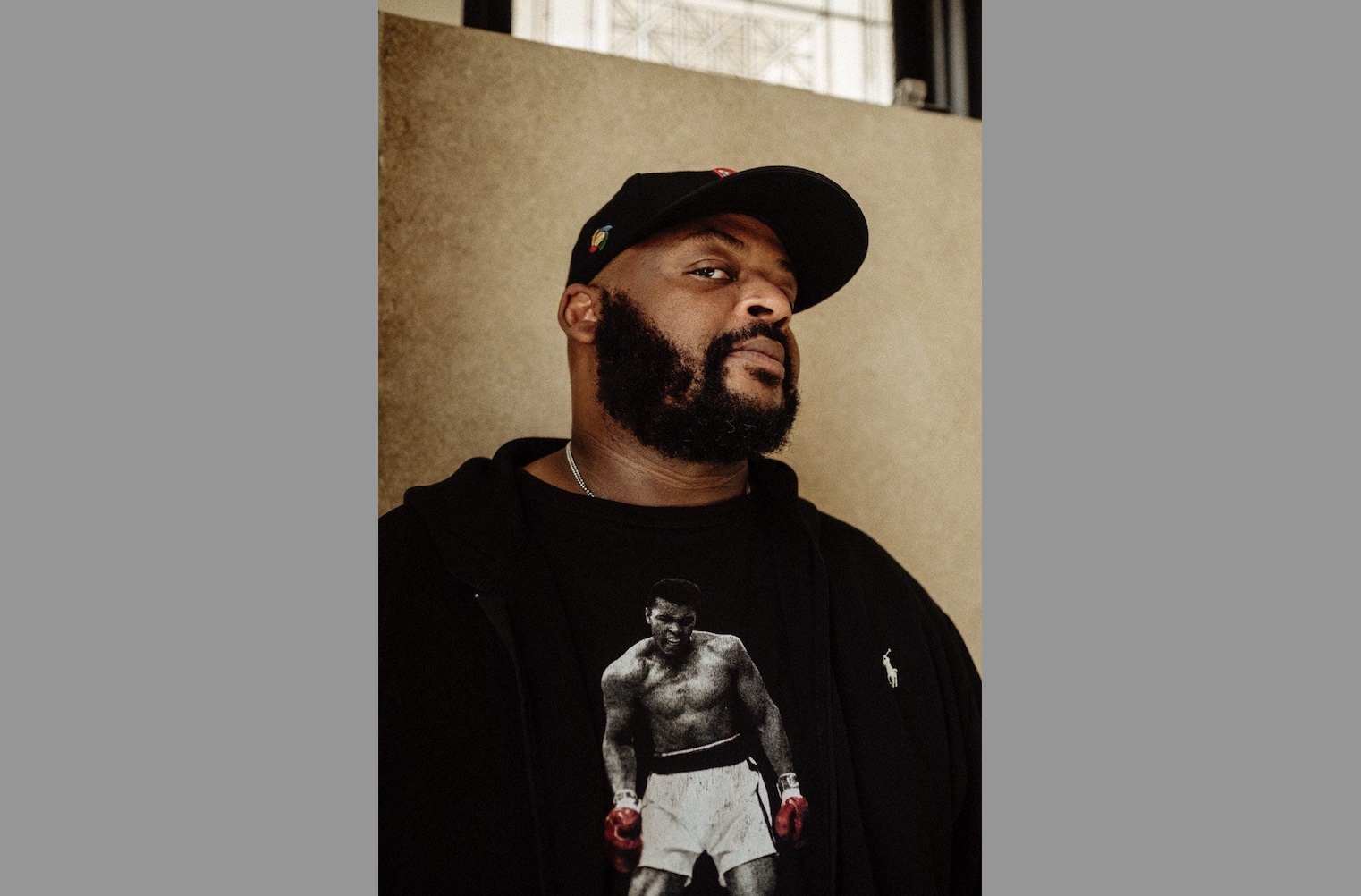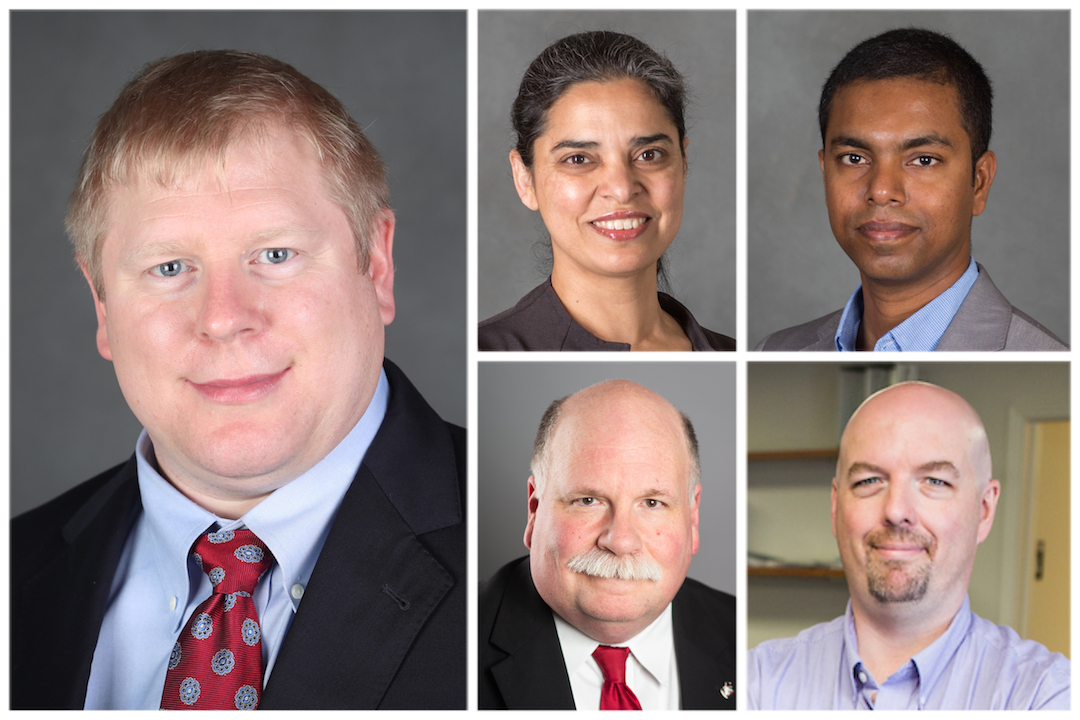Austin Peay team working on mathematical model to help university’s transition back to campus
(Posted May 20, 2020)
As leaders at Austin Peay State University work to define what classes will look like when students return to campus this fall, an APSU medical laboratory science professor and virologist is working with his colleagues to build a statistical model to help guide the way.
In mid-March, Dr. Perry Scanlan – a medical laboratory science professor in the Department of Allied Health Sciences – frequently referenced coronavirus data from local, state and national sources in his role on the University’s COVID-19 Task Force.
“But I realized that this doesn’t help if we don’t come up with ways to predict how to determine what might happen at Austin Peay,” Scanlan said. “It was hard to find solid, concrete data to make decisions.”
Scanlan sought help from Drs. Vajira Manathunga and Ramanjit Sahi from the Department of Mathematics and Statistics, Dr. Andrew Luna from APSU’s Decision Support and Institutional Research and Mike Wilson from APSU’s GIS Center to help build a more specific predictive model.
The group has been meeting since late March to build the model to answer one big question.
“How can we predict what might happen on campus or what is happening in the community so that we can help protect our students, faculty and staff on campus and even extend that help to our community partners?” Scanlan said.
The goal: Prevent COVID-19’s spread
The goal of the model is to determine how COVID-19 might affect people on campus during a 15-week semester this fall, Scanlan said. The data will help drive the university’s administrative decision-making.
“The real thought is, ‘How can we really get a model that tells us who’s at risk, who is more likely to become ill, what will happen over the course of a semester or a summer or longer, and then how can we use that model to intervene and make a difference for our students, our faculty and our staff?’” Scanlan said.
“As we change the variables in the model, we can predict what will happen if we don’t socially distance or if we have larger class sizes,” he added. “It will be able to predict what might happen and/or guide us in how we can intervene to prevent the spread of COVID-19.”
The model is meant to help guide campus decision-making, but Scanlan hopes that as the model advances, the university can use it to help city, county and state partners.
Different disciplines, same goal
Scanlan is a virologist by background with expertise in microbiology and immunology. He provides expertise on the virus and how it plays in the modeling.
“I have the scientific piece from the virologist’s perspective, but we need the mathematical modeling, we need the GIS modeling, we need the data from the institution,” Scanlan said.
Manathunga and Sahi have expertise in actuarial sciences, and they’re driving the mathematical side of the models to make predictions.
“I feel this project is very significant for making decisions in the fall semester,” Manathunga said. “It also gives me a chance to work with peers in different disciplines.”
Sahi added that the model has kept the safety of Austin Peay’s students, faculty and staff at the forefront.
“We hope that our mathematical model will help the administration in its decision-making,” she said.
Wilson also offers knowledge in predictive analytics, in artificial intelligence programming and GIS mapping. Luna tracks APSU’s university data.
“Many people believe that the GIS Center just makes maps,” Wilson said. “Instead, the GIS Center focuses on information. We are neither mathematicians nor health experts, we are information specialists.”
‘Open safely for everyone’
Austin Peay President Dr. Alisa White earlier this month announced plans to resume in-person classes on campus this fall. During that announcement, she also promised updates in the coming weeks about how the transition back to campus will happen, including having some employees return in June.
“Whatever decisions we make, the focus always will be on the safety of our students, faculty and staff, and our commitment to academic quality,” White said.
Wilson, when discussing the model that he’s helping with, noted the importance of these decisions.
“The university is going to make many momentous decisions in the coming weeks and months,” Wilson said. “It’s our job to provide APSU leadership with the best information available to help them.”
Manathunga added: “I hope our work in this project will help APSU open safely for everyone in the fall semester.”
To learn more
- For more about APSU’s COVID-19 response, go to https://apsu.edu/coronavirus/.
- For more about the Department of Allied Health Sciences at APSU, go to https://www.apsu.edu/allied-health/.
- For more about becoming a medical laboratory scientist, go to https://www.apsu.edu/medical-technology/index.php.
- For more about the Department of Mathematics and Statistics, go to https://www.apsu.edu/mathematics/.
- For more about APSU’s GIS Center, go to https://www.apsugis.org/.
- For more about Decision Support and Institutional Research at APSU, go to https://www.apsu.edu/dsir/.
News Feed
View All NewsFive Austin Peay State University marketing students competed in Oracle's inaugural two-day sales competition in Nashville, showcasing their sales skills and gaining valuable real-world experience.
Read More
Kyrstin Young performed as a dancer with Kendrick Lamar during the Super Bowl LIX halftime show, marking a milestone in her career and further inspiring her to create opportunities for aspiring young dancers.
Read More
McArthur Genius Fellow and nationally acclaimed author Kiese Laymon will speak at Austin Peay State University at 7 p.m. on March 20, in the Mabry Concert Hall.
Read More
